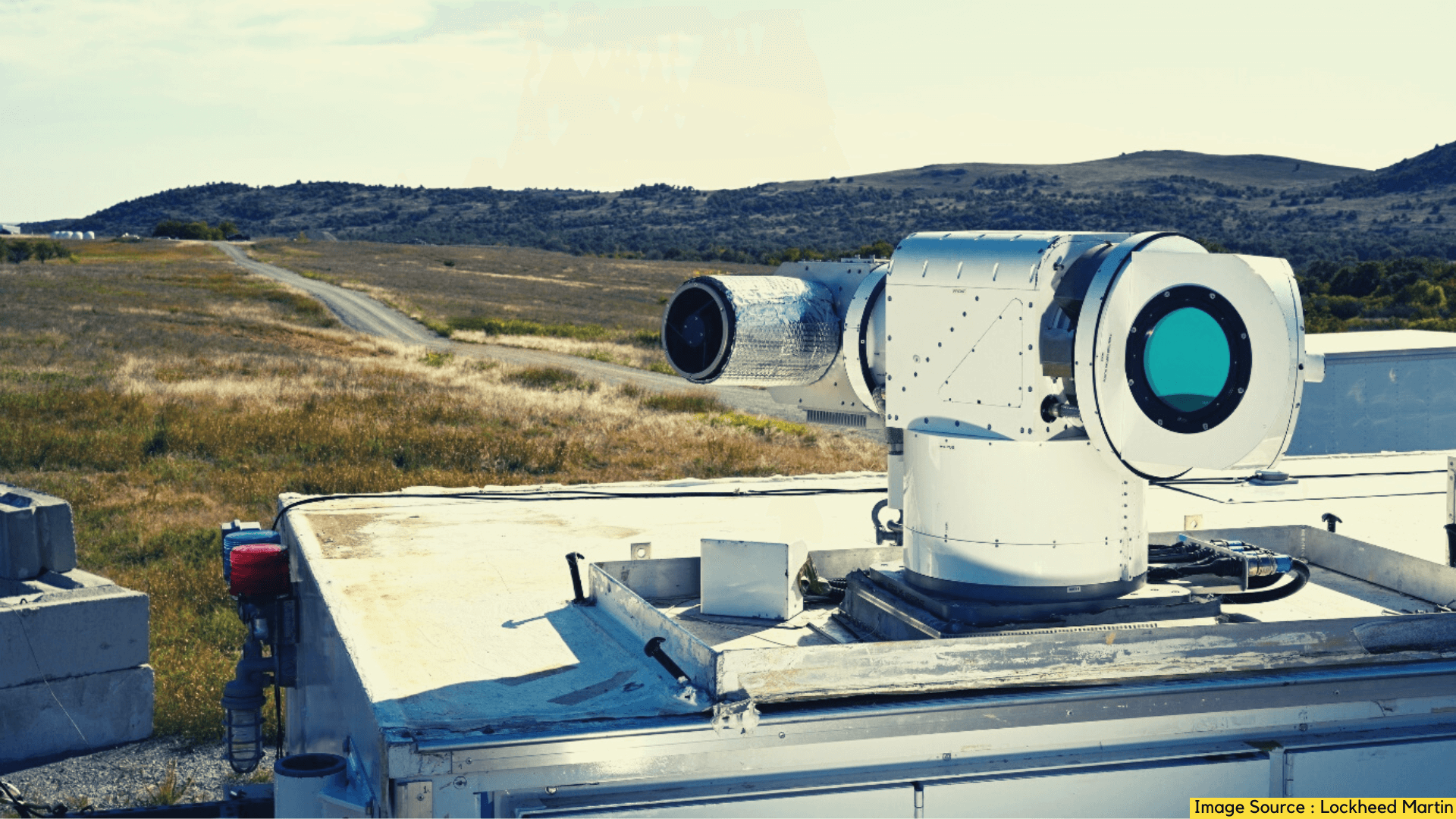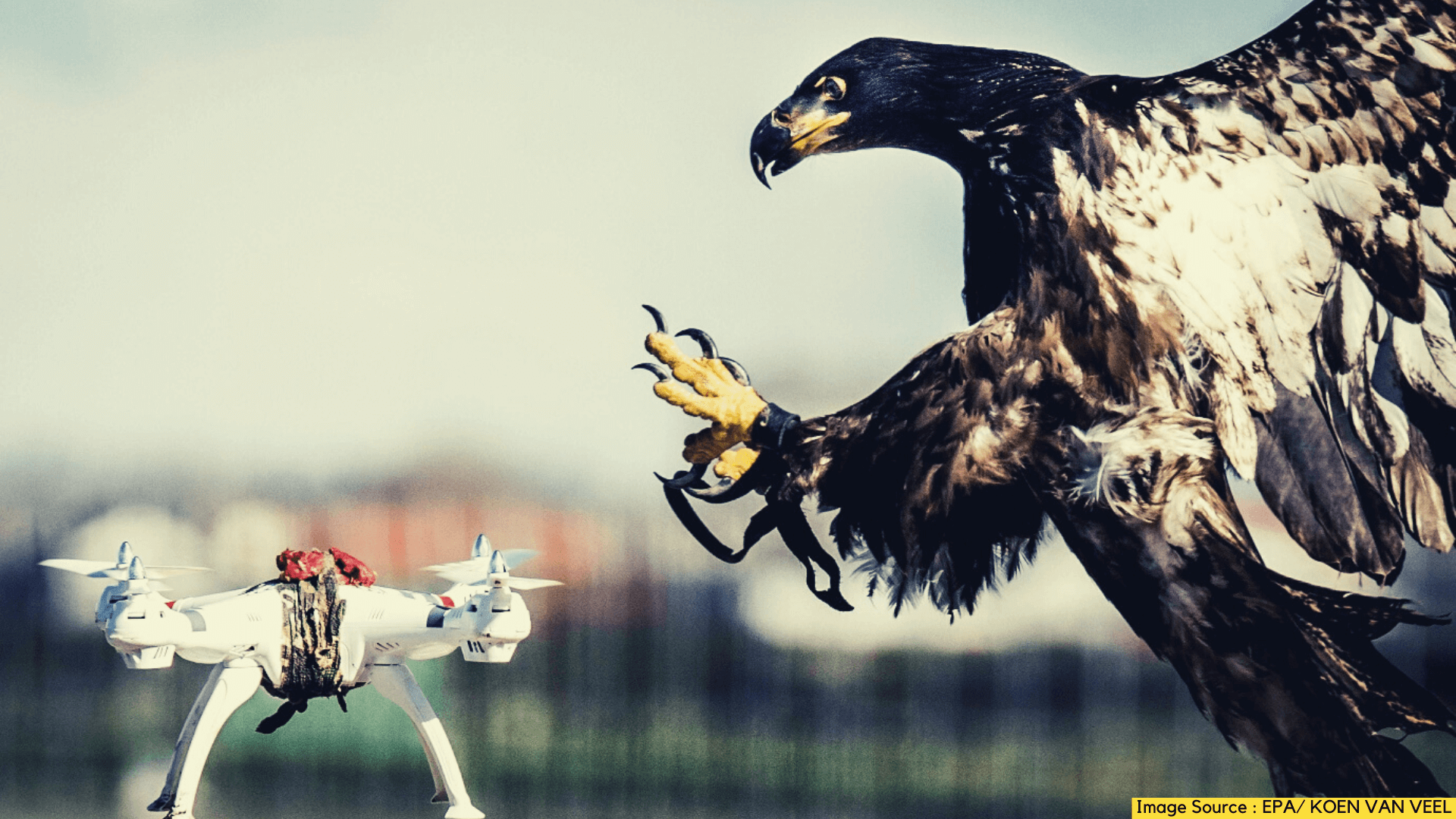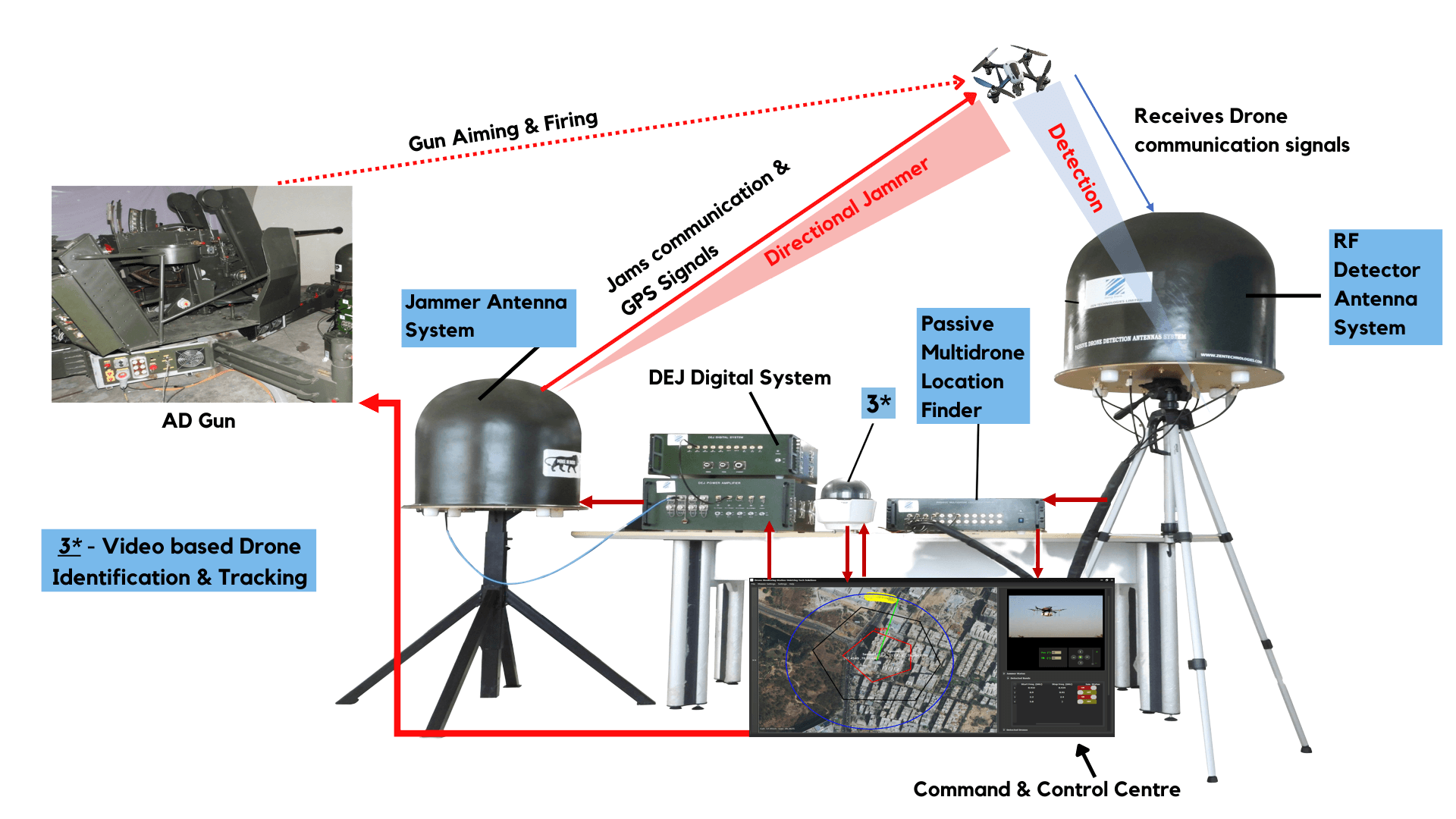Previously, we read about soft kill drone suppression methods like RF Jamming & GNSS Spoofing. This week we bring you hard kill techniques such as integration of AD Guns with counter drone technology, net cannons, birds of prey and how integrated systems are essential in countering drones in the growing era of drone warfare.
Air Defence Weapons. Air Defence weapons are usually available only to militaries. A truly flexible anti drone system would permit slaving of military Air Defence Weapons to its detection module, so that drones can be engaged effectively. Zen Technologies Limited offers such a system.

Net Cannons. Once a drone has been detected, identified and located it is feasible to fire a net at the drone thereby enmeshing its rotors so that the drone is unable to fly anymore. They work at ranges of 50 to 300 metres. This has value in situations where post-strike forensics needs to be carried out to establish the source of the drone. Nets can be fired either through shoulder fired cannons or a friendly drone with a net can be manoeuvred to get close to the intruder and force it to land. These guns unlike RF Jammers are legal and have been used to trap wild animals. Delft Dynamics and OpenWorks Engineering offer net cannon solutions.

·Laser Guns. A laser gun offers the promise of physically ‘burning’ the electronics on-board the drone thereby forcing it to crash. These systems are fairly complex since high energy lasers have to be generated. Risks of collateral damage to friendly drones exist although much lesser than a high powered microwave device. Ranges are unlikely to be higher than a km or so. Understandably militaries would be much interested in this technology as it is still largely experimental. Lockheed Martin and Raytheon offer such systems.
Birds of Prey. The natural aggressive instincts of birds of prey such as eagles and falcons can be harnessed by training them to physically fly close to the drone, attack it and neutralise it. For obvious reasons this is a niche field and impossible to scale up. Netherlands & France are two countries who train birds to attack drones.

Integrated Anti Drone Systems
The foregoing discussion indicates that one single technique of either detection or suppression is unlikely to provide a holistic solution against this potent low cost threat. It would be prudent therefore to have a tiered and layered method of detection and suppression. For instance, Radars could raise the first alarm of a possible intruder say at a distance of 10 kms or so, and as the drone nears the vulnerable area RF detection could commence from a range of 5 kms or so. As it comes within 1.5 kms or so electro optical sensors would be able to give a visual confirmation and activate the suppression system depending on the protocols and SOPs in place. All this implies the need for a data fusion and command centre that facilitates decision making for engaging with the drone. In extremely high threat situations the human could be taken out of the loop and decision making fully automated to reduce response times.
The Zen Anti Drone System
A large number of vendors offer integrated solutions such as ESG, Operational Solutions , Aselsan, TRD , Drone Detect Sys, and Zen Technologies Ltd.

Conclusion
Drones are a potent threat to both businesses and militaries. Since they have a relatively small size and operate at high altitudes countering them by conventional methods is a challenge.